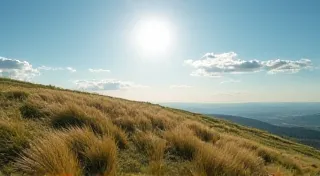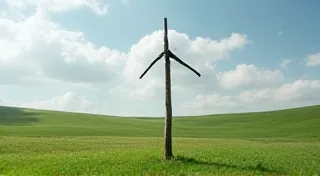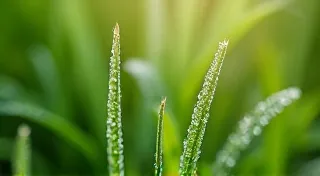Building Your Own Simple Weather Station: A Comprehensive Guide
Have you ever looked up at the sky and wondered about the forces at play? Do you enjoy hands-on science projects and learning about the fascinating world of meteorology? Then you're in the right place! This website is dedicated to providing clear, step-by-step instructions and plans for building your own weather station. Whether you’ve got a budding scientist in your family or you’re simply curious about the elements, creating a DIY weather station is a rewarding and educational experience. It's a perfect blend of practical skills and scientific understanding – a truly engaging science project for all ages.
Building a weather station doesn't have to be complicated or expensive. We're focusing on a simple, accessible approach, perfect for beginners. We’re going to cover everything from understanding the core components – like a reliable thermometer and accurate rain gauge – to interpreting the data you collect. It's more than just a project; it's a gateway to understanding the science behind the weather and the principles of meteorology.
Understanding the Basics: Instruments and Location
Before you start gathering materials and building, it’s crucial to understand the basic weather instruments you'll be using. Our guide, Understanding Basic Weather Instruments: A Beginner's Guide, breaks down the function of each component, explaining how they work and why they're important for reliable weather monitoring. You’ll learn about the principles behind measuring temperature, rainfall, wind speed, wind direction, and humidity - fundamental aspects of any successful weather station and essential knowledge in meteorology.
Location, location, location! The placement of your weather station is just as important as the instruments themselves. Choosing the right location can significantly impact the accuracy of your data. Our article, Choosing the Right Location for Your DIY Weather Station, provides detailed guidance on maximizing data accuracy, taking into consideration factors like exposure to sunlight, obstructions from buildings or trees, and proximity to potential sources of interference. A well-placed station is key to accurate data and a better understanding of local meteorology.
Building Your Instruments: Step-by-Step Guides
Now for the fun part – the building! We’ll guide you through constructing essential instruments, from a simple rain gauge to a wind vane. Let’s start with rainfall measurement. You can build your own using a simple Davis Cup – check out our detailed instructions in Building a Davis Cup Rainfall Collector. Alternatively, for a more straightforward project, follow our easy-to-follow guide to Building a Simple Rain Gauge: A Step-by-Step Guide. The principles are the same: effectively collecting and measuring precipitation, a core skill in understanding meteorology.
Measuring wind speed is another vital component of a complete weather station. Learn how to build your own anemometer using readily available materials in our project guide: DIY Anemometer: Measuring Wind Speed with Simple Materials. Understanding the wind's direction is equally important. Our tutorial, DIY Wind Vane: Build Your Own Wind Direction Indicator, will teach you how to construct a wind vane that accurately points into the wind.
Essential Tools and Materials
Getting started requires more than just plans. Knowing what you need is crucial. The article, Getting Started with Your DIY Weather Station: Essential Tools and Materials, provides a comprehensive list of everything you’re going to need. From basic hand tools to potentially more advanced components like microcontrollers (more on those later!), this guide ensures you’re properly equipped for your science project.
Interpreting Weather Data: Beyond the Numbers
Collecting data is just the first step. Learning to interpret it is key to truly understanding the weather patterns around you. What does a rising barometric pressure mean? How does humidity affect the "feels like" temperature? We’re going to help you decode the data your weather station collects. It's more than just numbers - it’s about understanding the stories the sky is telling and applying principles of meteorology.
Want to learn more about clouds? Our guide, The Science Behind Clouds: A Weather Station Perspective, will show you how to use your weather station data to understand the types of clouds and what they indicate about upcoming weather. It's an excellent way to explore the fascinating aspects of cloud formation and their role in weather systems, key concepts in meteorology.
Understanding dew point is a critical factor in predicting comfort levels and potential for precipitation. Our article, Understanding Dew Point: A Critical Weather Factor, explains how to calculate and interpret dew point, and its importance for accurate weather forecasting. It’s a cornerstone of understanding atmospheric conditions and is heavily used in meteorology.
And of course, understanding humidity is vital! Our detailed explanation, Humidity Explained: Measuring Moisture in the Air, will teach you how to measure and interpret this essential weather variable. Measuring humidity is a core component of weather monitoring.
Ensuring Accuracy and Reliability
Even with careful construction and strategic placement, accuracy is never guaranteed. Regular calibration is essential to maintain the reliability of your weather station. Our troubleshooting guide, Troubleshooting Common Weather Station Problems, addresses frequently encountered issues and provides practical solutions. Don't let a minor malfunction derail your science project.
Advanced Options: Connecting to the Internet and Microcontrollers
Once you’ll have the basics down, you might want to take your weather station to the next level. There are several ways to connect your station to the internet, allowing you to share your data with others or integrate it into online weather platforms. We’re going to introduce you to some simple options in our tutorial, Connecting Your Weather Station to the Internet (Simple Options).
For those interested in more advanced capabilities, microcontrollers open up a world of possibilities, from automated data logging to custom displays. Our introductory guide, Microcontrollers and Your Weather Station: An Introduction, provides a basic understanding of how microcontrollers can enhance your science project.
Housing Your Weather Station
Your weather instruments need to be shielded from rain, snow and direct sunlight. Building your own enclosure helps protect your weather station from the elements. Take a look at Building a Simple Weather Station Enclosure, to get started.
Understanding Your Weather Sensors
Not sure about the different types of sensors? Our Understanding Basic Weather Sensors: Thermometers, Hygrometers, and Rain Gauges article explains how they all work together to gather the data you need for your weather monitoring project.
Learning to Read Weather Patterns
Don't just collect data, interpret it! Our helpful guide, How to Interpret Weather Patterns: A Practical Guide, offers valuable insights into understanding the weather around you, using the data collected by your DIY weather station.
Building a DIY weather station is a fantastic blend of science, engineering, and craftsmanship. It’s a rewarding science project for anyone interested in meteorology. We hope this website provides you with the knowledge and resources you need to create your own personal window into the fascinating world of weather! Start building today and discover the power of understanding the atmosphere around you. Happy weather watching!




















